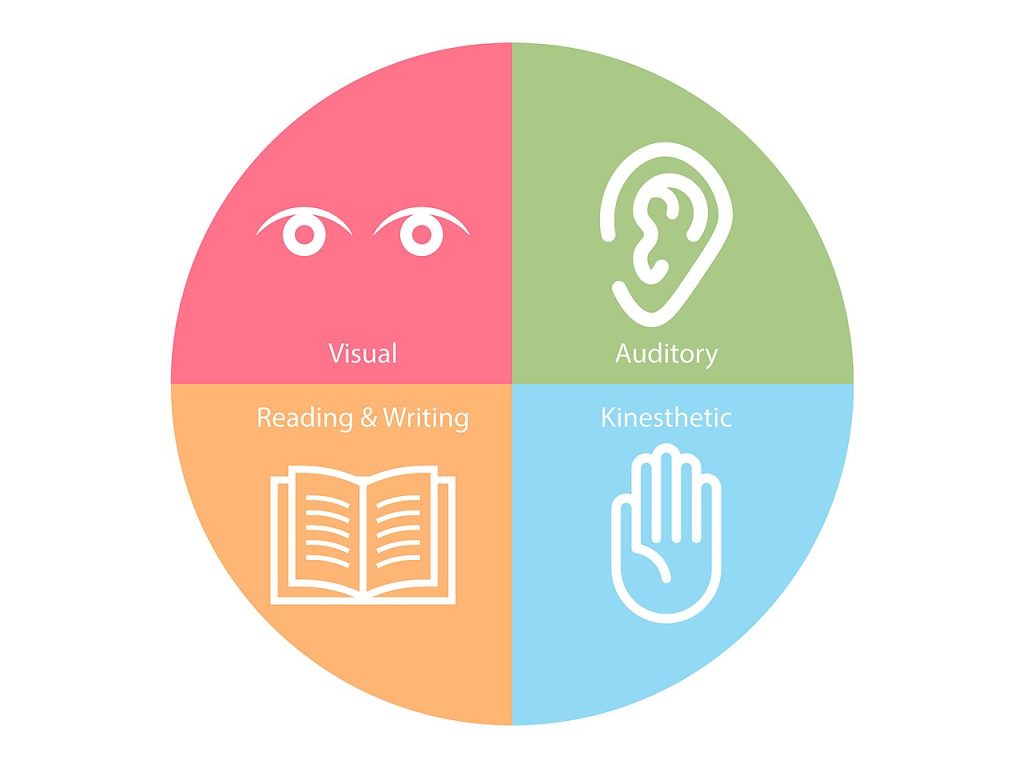Every student learns differently. Some grasp concepts best through visual aids, while others prefer hands-on experiences or listening to explanations. Understanding and adapting to various learning styles can significantly enhance student engagement, retention, and overall academic performance.
This article explores the different learning styles, their characteristics, and effective teaching strategies to accommodate each type, ensuring a more inclusive and effective learning environment.
What Are Learning Styles?

- Learning styles refer to the different ways individuals process, absorb, and retain information.
- While no single model is universally accepted, one of the most widely used frameworks is the VARK model, developed by Neil Fleming.
The VARK Model: Four Primary Learning Styles
- Visual Learners – Prefer images, diagrams, and charts.
- Auditory Learners – Learn best through listening and verbal explanations.
- Reading/Writing Learners – Retain information better through text-based formats.
- Kinesthetic Learners – Excel with hands-on activities and real-world applications.
📍 Many students use a combination of learning styles, but they often have one dominant preference.
1. Visual Learners 👀
🎯 How They Learn Best:
- Diagrams, infographics, charts, and maps.
- Color-coded notes and mind maps.
- Watching demonstrations or videos.
📌 Teaching Strategies for Visual Learners:
- Use PowerPoint presentations with images and graphics.
- Encourage sketching or drawing mind maps to summarize information.
- Incorporate videos, infographics, and interactive whiteboards.
- Highlight key concepts using different colors and fonts.
🔹 Example Activity:
🖼 Concept Mapping: Ask students to create a visual representation of a topic using diagrams and illustrations.
2. Auditory Learners 🎧
🎯 How They Learn Best:
- Listening to explanations and discussions.
- Engaging in verbal interactions and group discussions.
- Using mnemonic devices and repeating information aloud.
📌 Teaching Strategies for Auditory Learners:
- Encourage group discussions, debates, and oral presentations.
- Use podcasts, recorded lectures, and read-aloud techniques.
- Explain concepts using rhymes, chants, or songs.
- Allow students to verbally summarize what they’ve learned.
🔹 Example Activity:
🎙 Peer Teaching: Have students explain key concepts out loud to a partner, reinforcing their understanding through verbalization.
3. Reading/Writing Learners 📖✍
🎯 How They Learn Best:
- Reading books, articles, and written explanations.
- Taking detailed notes and summarizing information in writing.
- Working with study guides, handouts, and written instructions.
📌 Teaching Strategies for Reading/Writing Learners:
- Provide structured reading materials and study guides.
- Assign essays, reports, and journaling activities.
- Encourage self-reflection and written summaries after lessons.
- Use flashcards with written explanations.
🔹 Example Activity:
📚 Summarization Exercise: Ask students to write a one-page summary of a lesson, reinforcing key points through written expression.
4. Kinesthetic Learners 🤹♂️
🎯 How They Learn Best:
- Hands-on activities, experiments, and real-world applications.
- Moving, building, and physically engaging with learning materials.
- Learning through trial and error rather than passive listening.
📌 Teaching Strategies for Kinesthetic Learners:
- Incorporate experiments, simulations, and role-playing.
- Use physical objects, models, and manipulatives to illustrate concepts.
- Encourage interactive learning through movement, such as acting out historical events.
- Allow for frequent breaks and movement-based activities.
🔹 Example Activity:
🛠 STEM Challenges: Have students build prototypes, models, or conduct experiments to apply scientific or mathematical concepts.
Blended Learning: Catering to Multiple Learning Styles
📌 Most students do not fit neatly into one learning style—they may have a combination of preferences.
🔹 Blended learning integrates multiple teaching strategies to accommodate diverse learners, ensuring greater engagement and comprehension.
Strategies for Blended Learning:
- Use multimedia presentations (visual + auditory learners).
- Assign reading and written exercises (reading/writing learners).
- Include hands-on projects and fieldwork (kinesthetic learners).
- Facilitate group discussions and presentations (auditory learners).
📍 Example: A science teacher explaining the human body could:
- Show a diagram of organs (visual).
- Explain concepts verbally (auditory).
- Provide textbooks and notes (reading/writing).
- Let students build a 3D model of the organs (kinesthetic).
Benefits of Adapting Teaching to Learning Styles
- Increases Student Engagement – When students learn in their preferred style, they stay more focused.
- Improves Retention & Understanding – Personalized learning helps students grasp concepts more effectively.
- Boosts Confidence & Motivation – Students feel more capable and involved in their learning process.
- Encourages Active Participation – Students become more proactive in seeking knowledge.
Challenges & Misconceptions About Learning Styles
- Overgeneralization: No one fits perfectly into one category; learning styles are fluid.
- Resource Constraints: Schools may lack materials for varied learning methods.
- Rigid Categorization: Some educators believe learning styles are fixed, while in reality, they can evolve over time.
📌 Solution: Instead of strictly labeling students, teachers should use a variety of methods to engage all learners effectively.
The Future of Personalized Learning
🚀 AI & Adaptive Learning Technology – Online platforms like Khan Academy and Duolingo use AI to adjust content based on individual learning styles.
🎮 Gamification in Education – Interactive simulations and games enhance engagement for visual and kinesthetic learners.
🌍 Virtual & Augmented Reality (VR/AR) – Provides immersive experiences for kinesthetic and visual learners.
📍 As education evolves, integrating personalized and technology-driven approaches will further enhance student success.
Final Thoughts: Empowering Students Through Adaptive Teaching
Understanding and adapting to learning styles allows educators to create inclusive, engaging, and effective learning experiences. By embracing diverse teaching methods, we can empower students knowledge to maximize their potential and develop a lifelong love for learning.
✨ What’s your preferred learning style? Share your thoughts in the comments! 🎓📚💡

